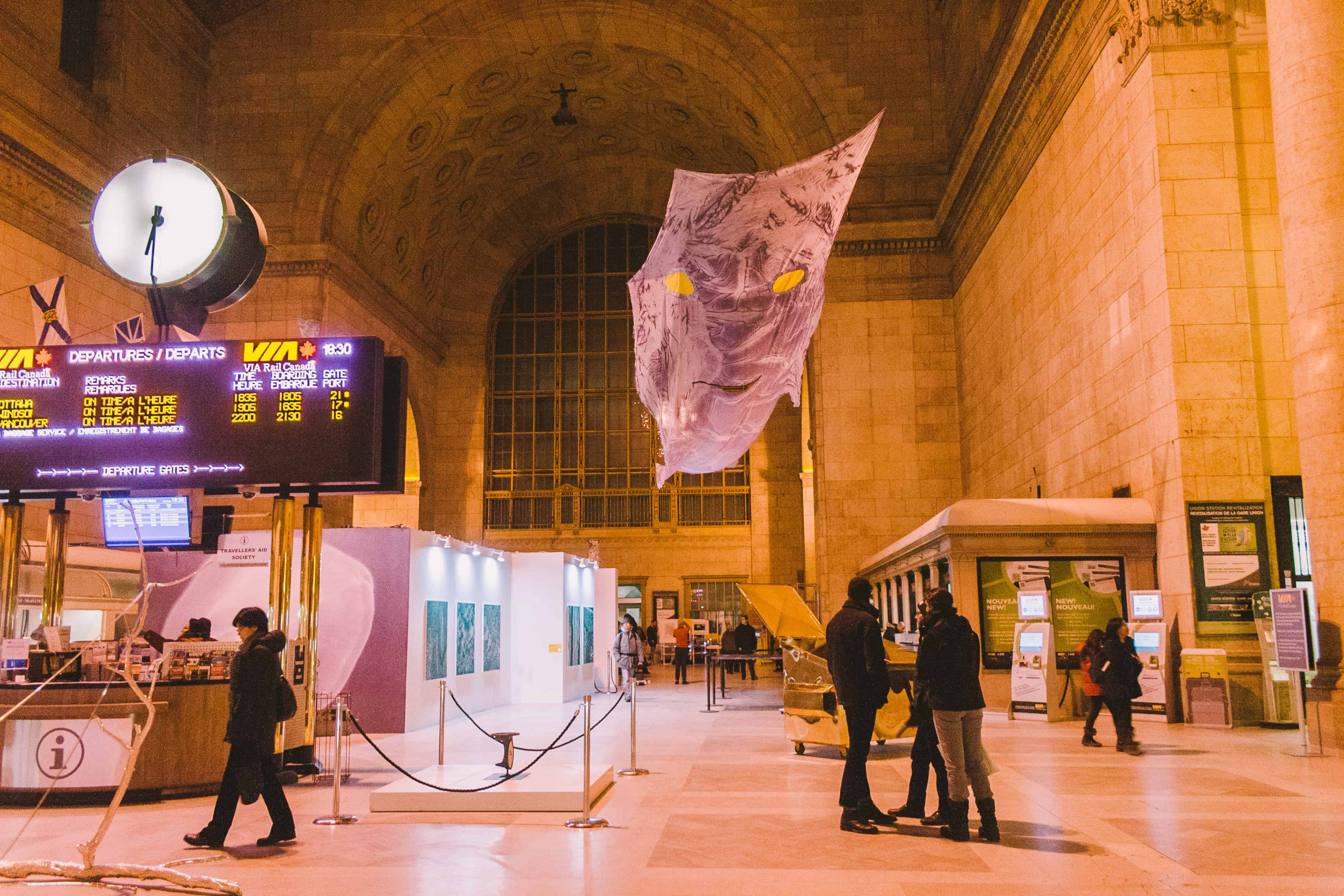Last Friday, I found myself in the dimly lit atrium of Union Station, filled to capacity with murmuring spectators.
It was the opening reception for VILLA TORONTO and felt appropriately glamorous —the effect of a beautiful space filled with young, well-dressed people.
The online description of the event states, “The event is not an art fair,” and the short statement manages to sum up the experience. The exhibit itself is not large and, despite the crowd, I was able to make my way through it in under an hour.
Despite its modest size, the exhibit features over 25 artists — visitors are offered a wide breadth of expression, if not the depth they might expect from a traditional exhibit.
The VILLA series was conceived and developed by Polish gallery Raster, with the aim of bringing the small-scale gallery experience to a collective and global level. The first exhibit was held in Warsaw in 2006, followed by Reykjavik in 2010 and Tokyo in 2011.
The Toronto segment is co-produced by Raster and Art Metropole, the not-for-profit organization devoted to collecting, representing, and selling artists work.
Certain installations were clearly labeled, featuring a small description of the artist in question. Others were less easily understood — I noticed an empty garbage dumpster painted in a metallic shade of silver, and only later found its partner: a silver portable toilet.
Nearby, a table sat with 50 blue and white bowls crowded underneath. When I finally got my hands on a brochure for the exhibit, I discovered it had been a performance work by artist Reto Pulfer, in which he served hot soup.
As a spectator, I found it challenging to find a continuous thread between the varying works. A film piece called “ZERO…” by Hans Schabus was simply a film loop of trees in a forest. Around the corner was Guillaume Leblon’s “Jocelyn Wolff,” which was three square panels of blue, silver, and black.
Simple but charming, Michael Portnoy’s “Kalochromes” depicted a series of macro shots of kale, in kale colored tones. Standing like oversized bookends at either ends of the hall were two statuesque installations, one like a larger-than-life newsstand, the other reminiscent of a totem pole.
Though at times sporadic in its coherency, VILLA offers viewers a glimpse into a variety of curated, gallery-esque exhibits. I found myself wishing I had gone with a friend — the minimalism of so many of the installations left almost endless room for interpretation.
When leaving the exhibit, I reflected on the power of a public art installation; it manages to transform a space that we traditionally overlook, and in doing so, change our perspective of that place forever. VILLA TORONTO manages to create a gallery, in perhaps, the last place you would expect.


